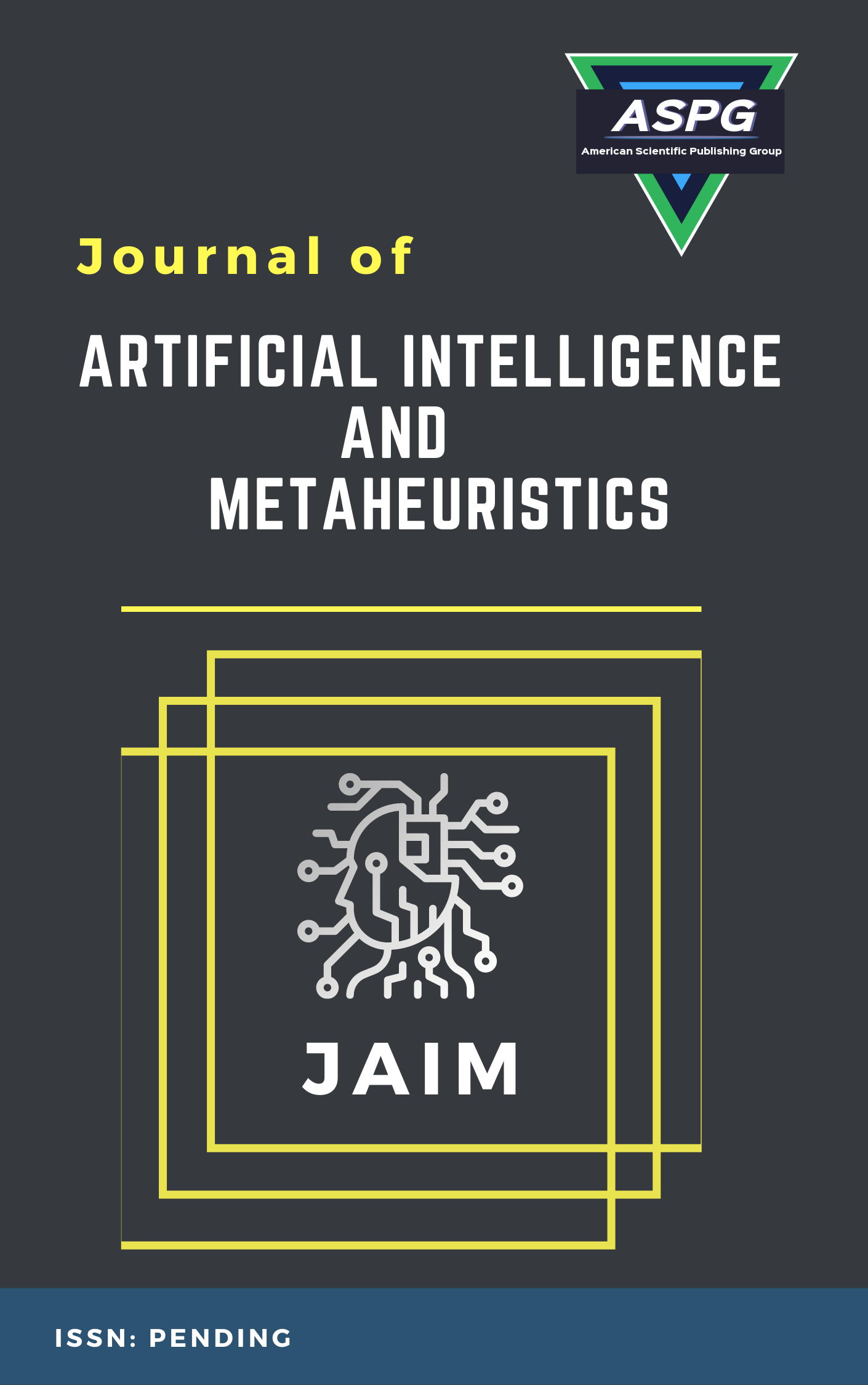

Volume 2 , Issue 1 , PP: 08-15, 2022 | Cite this article as | XML | Html | PDF | Full Length Article
Doaa S. Khafaga 1 * , Hussein Alkattan 2 , Alhumaima A. Subhi 3
Doi: https://doi.org/10.54216/JAIM.020101
When there are numerous possible solutions for a given class in a given problem, majority voting or plurality voting is typically employed. One common technique for improving classification accuracy is bagging, which involves training many classifiers on slightly different datasets and then voting on the combined results. In this research, we examine how alternative voting procedures affect the efficiency of two distinct classification algorithms applied to datasets of varying complexity. Despite the increased computing cost associated with determining preference order, the results show that the single transferable vote can be a suitable alternative to plurality voting.
Zoo data , Voting classifier , Support vector manchines , Neural networks , Decision trees.
[1] L. Breiman, ―Bagging predictors‖, Machine Learning, vol.24, pp. 123- 140, 1996.
[2] R.E. Schapire, Y. Singer ―Improved boosting algorithms using confidence-rated predictions‖,
Machine Learning, vol. 37, pp. 297-336, 1999.
[3] M. Van Erp, L. Vuurpijl, L. Schomaker, ―An overview and comparison of voting methods for
pattern recognition‖, IWFHR '02 Proceedings of the Eighth International Workshop on Frontiers in
Handwriting Recognition, pp. 195-200, 2002.
[4] K.T. Leung, D.S. Parker, ―Empirical comparisons of various voting methods in bagging‖, KDD '03
Proceedings of the ninth ACM SIGKDD international conference on Knowledge discovery and data
mining, pp. 595-600, 2003
[5] C. Cohagan, J.W. Grzymala-Busse, Z.S. Hippe, ―A comparison of three voting methods for bagging
with the MLEM2 algorithm‖, IDEAL'10 Proceedings of the 11th international conference on
Intelligent data engineering and automated learning, pp. 118-125, 2010.
[6] K. Machová, F. Barčák, P. Bednár, ―A bagging method using decision trees in the role of base
classifiers‖, Acta Polytechnica Hungarica, vol.3, pp. 121-132, April 2006.
[7] N. Abdel Samee, E. M. El-Kenawy, G. Atteia, M. M. Jamjoom, A. Ibrahim et al., "Metaheuristic
optimization through deep learning classification of covid-19 in chest x-ray images," Computers,
Materials & Continua, vol. 73, no.2, pp. 4193–4210, 2022.
[8] A. A. Abdelhamid and S. R. Alotaibi, "Optimized two-level ensemble model for predicting the
parameters of metamaterial antenna," Computers, Materials & Continua, vol. 73, no.1, pp. 917–933,
2022.
[9] R.D. Kulkarni, ―Using esemble methods for improving classification of the KDD CUP’99 data set‖,
IOSR Journal of Computer Engineering (IOSR-JCE), vol. 16, pp. 57-61, 2014.
[10] A. A. Abdelhamid and S. R. Alotaibi, "Robust prediction of the bandwidth of metamaterial antenna
using deep learning," Computers, Materials & Continua, vol. 72, no.2, pp. 2305–2321, 2022.
[11] Y. Zhang, H. Zhang, J. Cai, B. Yang, ―A weighted voting classifier based on differential evolution‖,
Abstract and Applied Analysis, 2014.
[12] T. Saito, ―Theoretical Model: Condorcet’s Jury Theorem, Part 1‖, Wolfram Demonstrations Project,
http://demonstrations.wolfram.com/TheoreticalModelCondorcetsJuryTheoremPart1, 2017.
[13] F. Leon, C.G. Piuleac, S. Curteanu, I. Poulios, ―Instance-based regression with missing data applied
to a photocatalytic oxidation process‖, Central European Journal of Chemistry, vol. 10, no. 4, pp.
1149-1156, 2012.
[14] F. Leon, C. Lisa, S. Curteanu, ―Prediction of the liquid crystalline property using different
classification methods‖, Molecular Crystals and Liquid Crystals, vol. 518, pp. 129-148, 2010.
[9] F. Leon, S. Curteanu, C. Lisa, N. Hurduc, ―Machine learning methods used to predict the liquidcrystalline
behavior of some copolyethers‖, Molecular Crystals and Liquid Crystals, vol. 469, pp. 1-
22, Taylor and Francis Group, USA, 2007, DOI: 10.1080/15421400701431232.
[10] M. Hall, E. Frank, G. Holmes, B. Pfahringer, P. Reutemann and I.H. Witten, ―The WEKA data
mining software: An Update―, ACM SIGKDD Explorations, vol. 11, no. 1, pp. 10–18, 2009.
[11] R.N. Shepard, ―Toward a universal law of generalization for psychological science‖, Science, vol.
237, pp. 1317–1323, 1987.
[12] K.Q. Weinberger and L.K. Saul, ―Distance metric learning for large margin nearest neighbor
classification‖, Journal of Machine Learning Research, vol. 10, pp. 207–244, 2009.
[13] F. Leon, S. Curteanu, ―Large margin nearest neighbour regression using different optimization
techniques‖, Journal of Intelligent & Fuzzy Systems, vol. 32, pp. 1321-1332, 2017.
[14] Abdelhamid, A.A.; El-Kenawy, E.-S.M.; Khodadadi, N.; Mirjalili, S.; Khafaga, D.S.; Alharbi, A.H.;
Ibrahim, A.; Eid, M.M.; Saber, M. Classification of Monkeypox Images Based on Transfer Learning
and the Al-Biruni Earth Radius Optimization Algorithm. Mathematics 2022, 10, 3614.
[15] Eid, M.M.; El-Kenawy, E.-S.M.; Khodadadi, N.; Mirjalili, S.; Khodadadi, E.; Abotaleb, M.; et al.,
Meta-Heuristic Optimization of LSTM-Based Deep Network for Boosting the Prediction of
Monkeypox Cases. Mathematics 2022, 10, 3845.
[16] R. A. Fisher, ―The use of multiple measurements in taxonomic problems‖, Annual Eugenics, vol. 7,
part II, pp. 179-188, 1936.
[17] R. O. Duda, P. E. Hart,‖ Pattern classification and scene analysis‖, John Wiley & Sons, p. 218,1973.
[18] I.W. Evett and E.J. Spiehler, ―Rule induction in forensic science‖, Central Research Establishment.
Home Office Forensic Science Service. Aldermaston, Reading, Berkshire RG7 4PN.
[19] P. W. Frey and D. J. Slate, "Letter recognition using holland-style adaptive classifiers", Machine
Learning, vol 6, 1991.
[20] D. Sami Khafaga, A. Ali Alhussan, E. M. El-kenawy, A. Ibrahim, S. H. Abd Elkhalik et al.,
"Improved prediction of metamaterial antenna bandwidth using adaptive optimization of lstm,"
Computers, Materials & Continua, vol. 73, no.1, pp. 865–881, 2022.